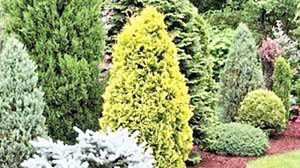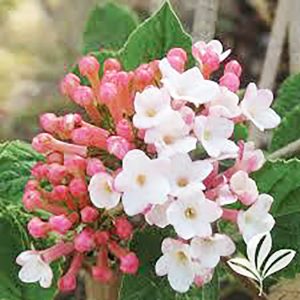
Have you been looking out your home windows or seeing your yard from the road and considering adding structural interest and color to your landscape to improve the winter view? Below are suggestions of trees, shrubs, perennials, and groundcovers you might use to do just that. A great side benefit to adding plants for winter interest is many of these will provide food and shelter for birds and small animals.
This is the second part of “A Winter Landscape” article. The first part, by Sherry Easterbrooks, delt with evaluating your gardens and yard. This part will be on choosing the structural elements and plants to enliven your property.

After you have studied your property, drawn a site map and made a list of ideas and desires, it’s time to consider your options. You have permanent objects such as houses, sheds, and trees, hardscapes like driveways and paths, trellises, decks, and arbors to work with and around. Decide what structures you want to add or remove before the growing season begins.
Before deciding on what plants you want to add, take into consideration the amount of sunlight available and the prevailing winds. Moisture and soil type also play a part in choosing plants. Decide if and where you want to add plants for structural interest during the winter months, for example an evergreen shrub, a weeping or contorted ornamental tree, or a stand of tall grasses.

Consider perennial plants that retain their seed heads, such as hydrangeas, echinacea (coneflowers), some varieties of iris, tall asters, autumn blooming clematis and many others.
Perennial plants, ground covers, and sub-shrubs that retain their foliage and color might include the silver artemisias, loropetalum, variegated euonymus which come in green and white or gold and white, golden or green junipers and ilex (holly), and red or yellow twig dogwoods. Ground covers of creeping jenny, hardy geraniums, and ajuga retain their colorful foliage and help prevent soil erosion from winter winds and storms.

Don’t forget the berries and drupes! Hollies can be both evergreen and deciduous, and most provide berries both for color and as food for the birds. Beautyberry, an open deciduous shrub covers its branches with intense violet-purple berries in the fall. Cotoneaster varieties which can grow as a ground cover or shrub and the upright pyracanthas also provide bright red berries. Pyracanthas can be trained up a trellis or chimney or form an impenetrable hedge with their sharp thorns.
There are also numerous perennial flowers that bloom during the late grey days of winter. hellebores (Lenten rose), pansies and violas, some varieties of primroses, and many early small bulbs.
For those warm winter days when you can get outside and enjoy the garden, you might want to add a few fragrant plants near a path or doorway. Some with the sweetest fragrance are the tall Arrowwood Viburnum ‘Dawn’ to the compact Korean Spice Viburnum which is growing by my front door. A large shrub that both blooms in the winter and smells delightful is Fragrant Wintersweet. Mahonia or Grape Holly also blooms early and smells great. All these early blooming plants provide much needed nectar for early bees.

Following is a list of possibilities for your winter garden. Plan now, plant in the spring or fall. Enjoy.
Trees
Evergreens – Pines, Cedars, Arborvitae, False Cypress, Juniper, Holly, Magnolia, several varieties of pine, cedar, false cypress and more come in dwarf forma.
Weeping trees – Weeping and Curly Willow, Cherry, Larch, Birch, Mulberry.
Exfoliating bark – River Birch, Paper Bark Maple, Kousa Dogwood, Stewartia, Crape Myrtle
Shrubs

Evergreens – Camelia, Azalea, Rhododendron, Yellow Anise, Juniper, Arborvitae, Yew, various Hollies, Abelia, Mountain Laurel, Mahonia aquifolium, Winter Heath, Euonymus, Yuca, Cotoneaster, Loropetalum, Nandina nana – no berries but bright red foliage.
Flowering – Camelia, Daphne, Witch Hazel, Mahonia, Winter Jasmine, Pieris Japonica.
Interesting Bark or Shape – Oakleaf Hydrangea, Nine Bark, Contorted Filbert, Dwarf Japanese Maple, Red Twig Dogwood, Coral Bark Japanese Maple.
Perennials

Evergreen – Hellebores, Cranesbill Geranium, Penstemon, Bergenia, SeaThrift, Rock Cress, Basket of Gold, Heuchera, Pulmonaria, Hakonechloa macra (Japanese Forest Grass).
Flowering – Hellebores, Cyclamen hederifolium, Primula vulgaris, Pansy, Viola, Winter Aconite.
Early Bulbs – Crocus, Scilla, Snowdrops, Daffodils.
Grasses – Switch Grass, Feather Reed Grass, Pennisetum Hameln, Northern Sea Oats, Purple Love Grass, Little Blue Stem, Carex or Sedges, Hakonechloa macra – Japanese Forest Grass. Avoid Miscanthus. It is invasive.
Groundcovers & Vines – Ajuga, Creeping Jenny, Mondo Grass, Golden Ragwort, Christmas Fern, Fernleaf Phacelia, Sedum, Tiarella Foamflower, Green & Gold, Carolina Jessamine, Akebia – white or chocolate, and Autumn Clematis for its fluffy seed heads.




